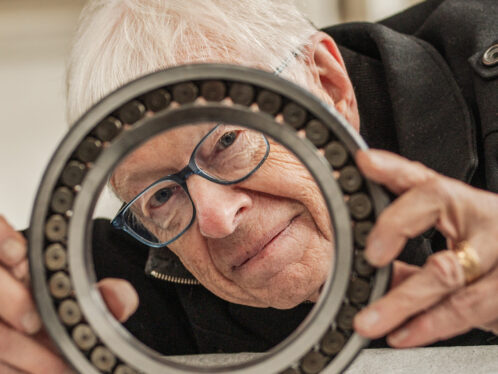
Clash of the Titanium
The scene looks like something from a Mad Max movie, only in miniature.
Across a barren landscape (in this case, an arena), menacing machines with names such as Overkill, Voltronic and Vlad the Impaler, are slamming into each other. Sparks fly, motors screech and metal crunches. A table saw on wheels advances towards a hammer-wielding wonder.
Begun as a competition between geeks in the mid-1990s, these duels to the death have a large following. Now the rumbles have found another arena – television. They are the main attraction of BattleBots, a popular show in which robots attack and their human designers cheer from the sidelines.
“It’s about education,” says Trey Roski,
BattleBots CEO and co-founder. “It’s about using the mind, and it’s about thinking.”
The first official tournament was held in Long Beach, California. Since then, BattleBots has grown into a pop culture empire. In
addition to the TV show (broadcast in the US, Britain, Canada and other countries) BattleBots organisers also run high-school competitions where kids build bots and learn about science and maths along the way.
Regular tournaments are held for adults as well, with the juiciest fight scenes showing up on TV. There are also videos, magazines and T-shirts for fans to collect and lucrative licensing agreements with the likes of Game Boy and McDonald’s.
Happy Meals will never be the same.
Since this is a sport, the robots come in lightweight (about 27 kg), middleweight, heavyweight and the mighty, super heavyweight (tipping the scales at up to 155 kg).
The machines are built to have staying power, but also to inflict damage on their opponents. Most of the robots are designed to destroy, while many student bots are made to perform specific tasks and take part in races. The bots are remote-controlled and go at each other one-on-one.
“It’s life and death,” says Roski.
Many of the bots use SKF electrical linear actuators and electromagnetic actuators, which convert rotary motion to linear motion. This allows the destructive accessories, such as drills, saws and internal grinders, to run.
Actuators are based on the SKF ball screw, which is widely used in the engineering of bots. The screw is built into two concentric tubes – an outer protection tube and an inner adjustment tube. The actuator is driven by an electric motor, with the power transmitted to the screw through a worm gear.
Time to kick bot.




